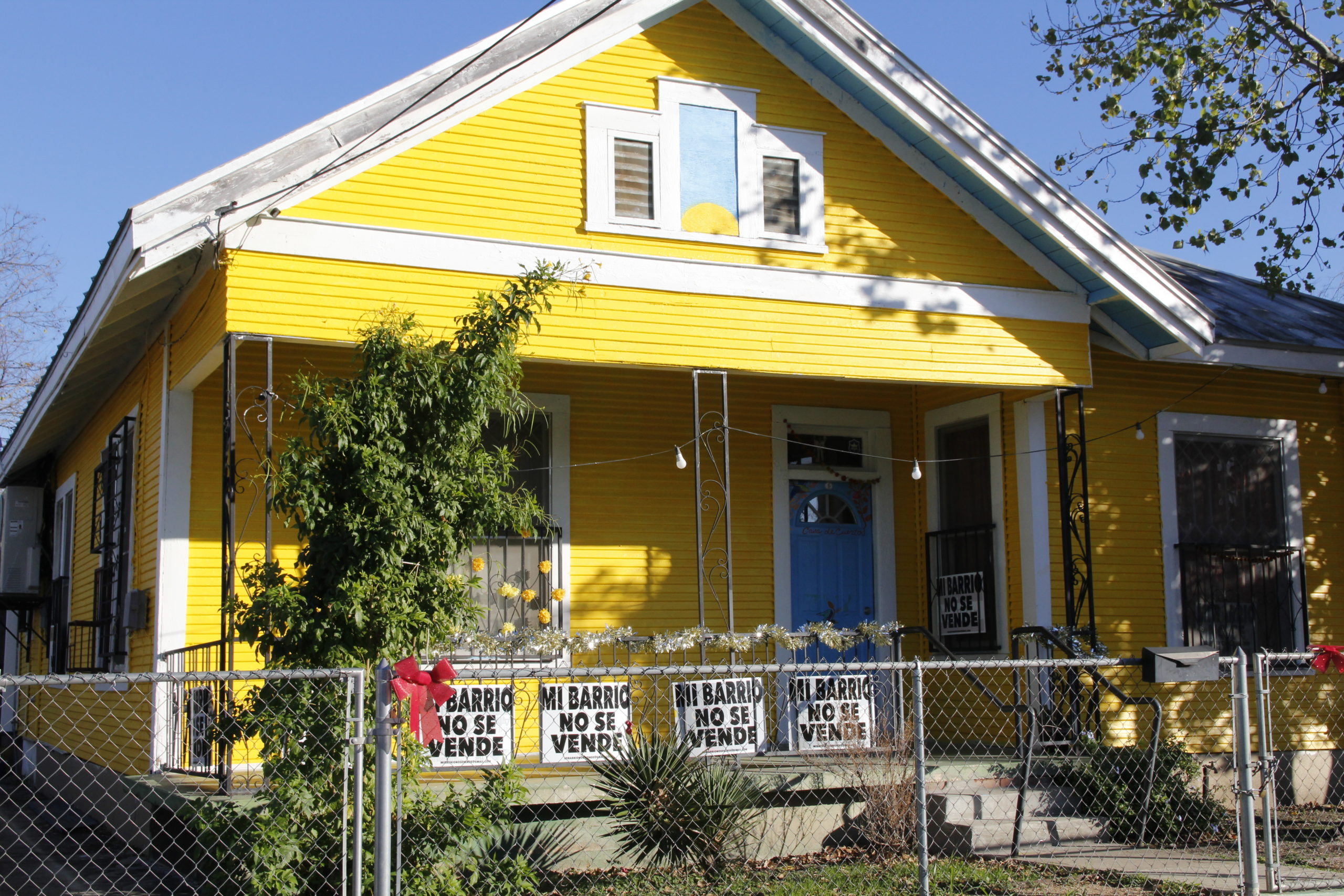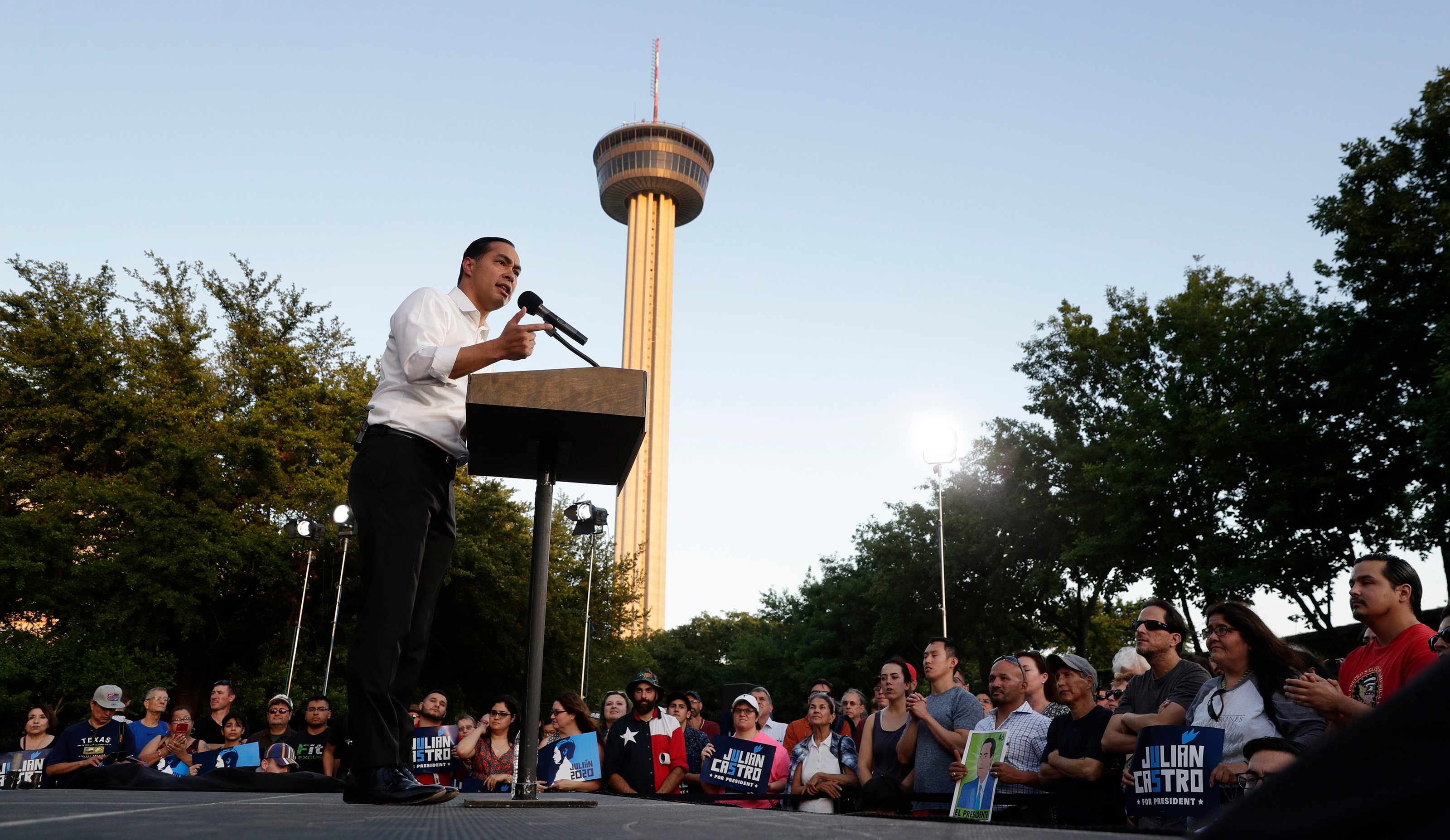Richard Montellano says he didn’t take the code violation notices that seriously at first. Then a few years ago, city code compliance officers started showing up at his home on San Antonio’s West Side every few months to document deteriorating conditions like leaning walls and a cracked foundation. Montellano, 63, who lives alone and inherited the home from his mother, tried to fix what he could himself. He applied for home repair assistance programs, but he never found help. Then the pandemic hit and work dried up. “I was doing a lot of hospitality jobs, banquets and stuff like that, but then most of it just stopped,” Montellano recalls.
In August 2020, city officials decided that Montellano hadn’t done enough to resolve the violations. They ordered him to demolish the house where he’s lived his entire life, giving him the option to tear it down himself or pay the city to do it. Montellano, who’s still fighting the demolition order, says he has nowhere else to go and feels blindsided by the process. “I’m begging them to just let me fix what I can,” he says. “What other option do I have?”
San Antonio leaders say demolition orders are a tool of last resort, yet issue them far more often than in any other metro area in the state. Between 2015 and 2020, the City of San Antonio issued 626 orders to vacate and demolish occupied single-family homes, compared to 16 orders in Houston, Dallas, Austin, and Fort Worth combined during that same period, according to a report published last month by researchers at the University of Texas School of Law. The report argues that San Antonio appears to be violating state law by failing to provide relocation assistance for people who are displaced by home demolitions—a claim city officials have vehemently denied.
The UT report has reignited local discussions about displacement in some of San Antonio’s oldest and poorest neighborhoods with the highest concentrations of Black and Hispanic residents. City data shows that orders to vacate and demolish have occurred mostly on the edge of downtown—including in the West Side, where Montellano lives—near areas that have been primed for gentrification by city tax breaks for developers and proactively targeted for code enforcement sweeps in recent years. “The neighborhoods with the highest concentration of demolition and vacate orders—particularly those on the westside and eastside of the city—are the same neighborhoods that have historically been shaped by decades of public and private disinvestment and racially discriminatory policies and laws, such as bank redlining,” the report states.
While gentrification is less advanced in San Antonio than in Austin or Houston, some inner-city neighborhoods have already seen rapid change in recent years thanks to Julián Castro’s “Decade of Downtown,” an urban redevelopment project that led to the displacement of residents on the southern and eastern edges of downtown.
Graciela Sánchez, a prominent community organizer and advocate for housing justice on the West Side, says the new research reiterates what people from the community have been telling city leaders for years. “Empty lot after empty lot, empty lots with cement staircases going to nowhere, that’s my image of the West Side and what’s going on there now,” she says.
Neighborhood groups where most of the demolitions have occurred have long complained of aggressive code enforcement. According to Leticia Sánchez, co-chair of the Westside Historic Residents Association and Graciela’s sister, neighbors regularly report that code compliance officers are rude and unhelpful. “This is basic stuff we’ve been bringing up,” Leticia says. “Your code compliance officers are disrespectful of our residents, they’re not explaining anything, they’re acting as police and threatening our residents, the majority of whom are vulnerable because they’re either elderly or disabled.”
San Antonio officials have largely attempted to downplay and even disparage the UT report since its release last month. On December 13, Michael Shannon, director of the Development Services Department for the city, delivered a lengthy presentation at a city council planning committee meeting, during which he defended the high number of vacate and demolish orders while flipping through slides with images of dilapidated homes. Shannon didn’t respond to the Observer’s request for an interview, but during his presentation pushed back against the findings in the UT report, quibbled with the data, and asked the city to commission a separate study of the issue, saying, “I believe this report was prepared with the intent to really incite controversy rather than help us.” (Heather Way, lead author of the UT report, told the Observer that she stands by the research, saying, “It’s a common tactic when people are in a defensive posture to attack the messenger.”)
When it was her turn to speak at the city council meeting, Teri Castillo, a member whose district encompasses the West Side, told Shannon that she was disappointed by the city’s response. “We need to recognize that these practices equate to modern day redlining,” she said. Castillo, who ran for office on a platform of housing justice, has argued that the city needs to provide social workers and other wraparound services for homeowners facing orders to vacate and demolish. “People are losing generational property, they’re losing the potential and the ability to build wealth,” she told the Observer. “Failing to implement policy to mitigate these demolitions means that we as a city are perpetuating racial and economic injustice and generational poverty.”
Ray Morales, another member of the Westside Historic Residents Association, visits Richard Montellano at least a couple times each week, helping him apply for jobs or home repair assistance. Morales first met Montellano last year after the group learned that his home was facing demolition. Morales, an architect by trade, says he tried to help fight the order, but struggled to navigate all of the city notices and hearings, calling the process Montellano was facing “labyrinthian.” Last week, Morales stopped by the run-down house to take Montellano out to lunch. Over tacos and enchiladas, they talked about the plans that Morales drew up for a new house, if they ever find enough money to rebuild and keep Montellano on the same West Side lot that he’s always called home. Montellano told Morales to keep it simple. “I don’t want nothing fancy,” he said. “I could live in a box.”




